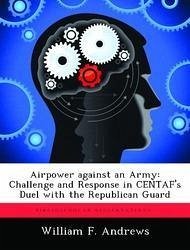In January and February 1991, Central Command Air Forces (CENTAF) conducted an air-to-ground onslaught against Iraq's Republican Guard. The requirements of this operation conflicted with several aspects of the U.S. Air Force's preparations for a European battleground. The low-altitude tactics CENTAF crews had practiced for the previous decade and a half were unsuitable for the task at hand.This study examines how effectively CENTAF adjusted air operations against the Republican Guards to the changing realities of combat. The extent to which existing USAF doctrine prepared CENTAF for this operation provides a baseline for the amount of adaptation required. The subsequent narrative identifies tactical innovations developed during the operation, the main elements of adaptive process, those factors that helped and hindered the process, and the sources of CENTAF's innovations.Initial F-16 and B-52 attacks on the Republican Guard registered little success. In response, CENTAF launched six significant tactical innovations in one week: A-10 deep interdiction, A-10 reconnaissance, F-16 Killer Scout operations, F-16 forward basing, F-111 and F-15E "Tank Plinking," and the use of cockpit videotape as a bomb damage assessment (BDA) source. These innovations required CENTAF aviators to create new tactics as they conducted operations. CENTAF's effectiveness against the Guard divisions improved, resulting in greater destruction of Iraqi forces.








